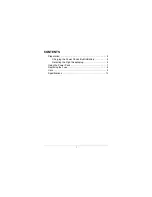
18
| English
The dust extractor must be suitable for the material being
worked.
When extracting dry dust that is especially detrimental to
health or carcinogenic, use a special dust extractor.
Operation
u
Products that are only sold in AUS and NZ:
Use a resid-
ual current device (RCD) with a nominal residual current
of 30 mA or less.
Operating modes
u
Pull the plug out of the socket before carrying out any
work on the power tool.
Pendulum action settings
The pendulum action can be adjusted using four different
settings, allowing the cutting speed, cutting capacity and the
cut itself to be optimally adapted to the material that you
want to cut.
You can also adjust the pendulum action during operation
using the adjusting lever
(7)
.
Level 0
No pendulum action
Level I
Low pendulum action
Level II
Moderate pendulum action
Level III
High pendulum action
The optimum pendulum level for each application can be de-
termined by a practical test. Note the following recommend-
ations:
– Select a lower pendulum level or switch off the pendulum
action completely if you wish to produce a finer or cleaner
cutting edge.
– Switch off the pendulum action when machining thin ma-
terials (e.g. sheets).
– Work on hard materials (e.g. steel) with low pendulum ac-
tion.
– You can work on soft materials and saw wood in the direc-
tion of the grain using maximum pendulum action.
Adjusting the mitre/bevel angle (see figure I)
The base plate
(5)
can be swivelled to the right or left to
make mitre cuts up to 45°.
The hood
(16)
, the extraction outlet
(17)
and the anti-
splinter guard
(15)
cannot be used while mitre/bevel cuts
are being made.
– Push the extraction outlet
(17)
gently upward and pull it
out of the base plate
(5)
.
– Remove the hood
(16)
and the anti-splinter guard
(15)
.
– Loosen the screw
(19)
with the hex key
(4)
and slide the
base plate
(5)
slightly towards the power cable.
– The base plate has lock-in points on the left and right so
that precise mitre/bevel angles can be set. Swivel the
base plate
(5)
to the required position according to the
scale
(20)
. Other mitre/bevel angles can be adjusted us-
ing a protractor.
– Then push the base plate
(5)
towards the saw blade
(10)
as far as it will go.
– Retighten the screw
(19)
.
Moving the base plate (see figure I)
You can move the base plate
(5)
back for sawing close to
edges.
Loosen the screw
(19)
and push the base plate
(5)
towards
the mains cable as far as it will go.
Retighten the screw
(19)
.
Sawing with an offset base plate
(5)
is only possible with a
mitre/bevel angle of 0°. In addition, the parallel guide with
circle cutter
(23)
(accessory) as well as the anti-splinter
guard
(15)
must not be used.
Sawdust blower device
The cutting line can be kept clear of chips using the airflow
from the sawdust blower device.
Switch on the sawdust blower device for work in wood,
plastic, etc. with a high level of material removal. Do this by
sliding the switch
(6)
to the
"I"
position.
Switch off the sawdust blower device when working in metal
or with a dust extraction system connected. Do this by slid-
ing the switch
(6)
to the
"0"
position.
Starting Operation
u
Pay attention to the mains voltage. The voltage of the
power source must match the voltage specified on the
rating plate of the power tool. Power tools marked
with 230 V can also be operated with 220 V.
Switching On and Off (GST 150 CE)
u
Make sure that you are able to press the On/Off switch
without releasing the handle.
To
switch on
the power tool, slide the on/off switch
(2)
for-
wards so that
"I"
appears on the switch.
To
switch off
the power tool, slide the on/off switch
(2)
backwards so that
"0"
appears on the switch.
Switching On and Off (GST 150 BCE)
u
Make sure that you are able to press the On/Off switch
without releasing the handle.
To
switch on
the power tool, press the on/off switch
(2)
.
To
lock
the on/off switch
(2)
, keep it pressed down and
push the locking mechanism
(1)
to the right or left.
To
switch off
the power tool, release the on/off switch
(2)
.
If the on/off switch
(2)
is locked, press the switch first and
then release it.
Constant Electronic control
The Constant Electronic control keeps the stroke rate at no
load and under load virtually consistent, guaranteeing uni-
form performance.
Controlling the stroke rate (GST 150 BCE)
You can variably adjust the stroke rate of the power tool
when it is on by pressing in the on/off switch
(2)
to varying
extents.
1 609 92A 4VE | (04.04.2019)
Bosch Power Tools
Содержание 3 601 E12 0
Страница 4: ...4 A B 13 10 11 9 8 E 16 C 14 D 15 5 5 8 1 609 92A 4VE 04 04 2019 Bosch Power Tools ...
Страница 5: ... 5 F G H 17 18 5 19 17 I J 21 20 5 4 20 23 22 Bosch Power Tools 1 609 92A 4VE 04 04 2019 ...
Страница 6: ...6 K L M 24 13 21 25 22 1 609 92A 4VE 04 04 2019 Bosch Power Tools ...
Страница 219: ... 219 T144D for wood 5 135 T308BP 5 150 T234X 3 65 T101AO 1 5 65 T308B 5 50 Bosch Power Tools 1 609 92A 4VE 04 04 2019 ...
Страница 223: ... 223 T1013AWP for special materials 150 T113A 100 T130RF 5 15 T141HM 5 50 Bosch Power Tools 1 609 92A 4VE 04 04 2019 ...
Страница 226: ...226 1 609 92A 4VE 04 04 2019 Bosch Power Tools ...
















































